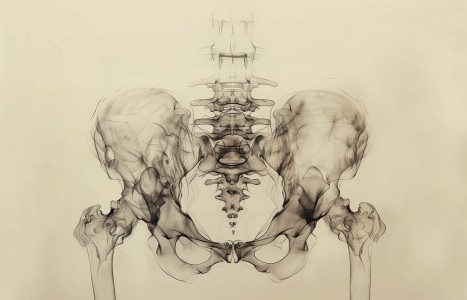People today want convenience, whether it be from their bank, credit card, favorite retail store, or restaurant. They demand it from the companies who hold their loyalty, including their health care providers (you). They don’t want to call and possibly be put on hold, and they want to use an app or schedule an appointment on your website. Here are three reasons your practice can gain by switching to online appointment scheduling.
Sciatica - Personal Insights
To add fresh insights to our medical knowledge, can we be “living labs” for one another, to document our own personal health challenges when appropriate? Recently I experienced a crippling left hip pain after a brisk four-mile walk. In no way did I suspect sciatica. I’m sharing details because this was a unique confrontation for me, and it demonstrated assorted reactions we all go through with sciatica; unsurprising when we remind ourselves the sciatic is the longest nerve in the body.
When I told “Patricia T.,” a friend of mine in NYC, her first comment was, “But your shiatsu helped me recover from sciatica years ago!” Yes, indeed – I helped her and several other folks through typical sciatic pain. I recall placing Patricia in the side position while I performed a subtle rocking movement down either side of her spine, pausing on UB 23, 25, and points around her sacrum to ease her back pain.
The key (for sciatic and all lower back pain) was to zap UB 36 (in the middle of the gluteal fold) by sinking my thumbs bilaterally into those points with a slight lifting technique, fingers pointed upward;1 followed by palming down the UB meridian in Patricia’s legs to ease thigh pain.
Hip Pain
However, I experienced no back discomfort at all – only left hip pain – after my brisk walk. So, I sought help from my chiropractor, and one of my LAc buddies seeded my ear. I also found relief when seated by bunching my knuckles bilaterally in GB 30 and then UB 36 repeatedly. To increase pressure, I used my body weight against the chair.
But later, when I experienced pain shooting down the ST meridian in my lower left leg, my chiro sent me to Texas Orthopedics to consult a surgeon with whom he worked closely. My greatest concern? The possibility of a hip replacement. But no. Given my pain patterns, they X-rayed my lower back and determined bulging L4/L5 discs were irritating my sciatic nerve, prompting the hip and lower leg pain. They prescribed twice-weekly physical therapy in-house before a return visit to the surgeon.
Combo ABT, Needling, & PT
I’ve since completed over a month of intensive PT, acupuncture, and self-shiatsu, and no longer experience those agonizing pains.
In the January issue, AT’s editorial staff reported on a hospital study in China on the successful use of acupuncture for chronic sciatica.2 Alas, the study didn’t go into the sort of graphic details I experienced! I had to sleep on my right side, packed between pillows for support. Postural distortion had me shuffling along the block, bent over a stick like the witches in Macbeth. Accustomed to seeing me cycling or walking daily around the ‘hood, my neighbors assumed I had been in an accident.
I’ll itemize my combo of treatments and exercises that, thankfully, have left me pain free. I sought tuina and needling from two different LAc buddies. What I most appreciated was tuina wrist rolling along my shoulders and down back shu points to help me relax before any needles were inserted.
I was in such pain during my first session, it was impossible for me to lie on a table, so my LAc buddy sat me down at the side of her table and suggested I lean over a couple of pillows. Hugging the pillows was comfortable, comforting, and ideal. It was a great reminder of how, in my own practice, I have always spent time encouraging a client to sit or lie in her/his best position, banked by pillows where necessary.
Self-Shiatsu
At home, I had already determined that my self-shiatsu was most effective when I lay on my back, right leg raised first, knee bent, as I placed my fingers bilaterally in UB Meridian to apply pressure from thigh to knee; and then, switching to my thumbs, to continue to press down UB from the back of the knee to UB 60 / K 3 at the Achilles, all the while pumping my foot.
I then repeated the same process on my painful left side. To release pain in my lower left leg, I pinched down my ST Meridian, pausing to apply in-depth pressure repeatedly on ST 36. Once again, it’s our custom in zen shiatsu to work on the pain-free side first before focusing on the affected side. This give our fingertips the ability to feel the contrasts in meridian and point qi between a regular and a disturbed side.
I also found it helpful to climb my stairs on all fours like a crab several times a day, for pain-free passive stretches.
Physical Therapy
My PT at Texas Orthopedics paced me through a range of exercises from simple to complex. I’ll share those I found – and continue to find – the most useful, not in any order of importance:
- The Hinges: Stand, place hands against a table for support. Tilt hips forward for a count of five. Repeat 20 times. An advanced version? Place one leg behind the other, back leg on tips of toes.
- Large Exercise Ball: Sit on the ball and bounce several times; then tilt hips forward. Hold the stretch for a count of five. Perform 20 rounds.
- Exercise Ball-up-the-Wall: Hold the ball against the wall, Roll it up the wall as high as possible on fingertips; then turn to one side and roll ball up the wall using one hand. Hold the stretch. Repeat on the other side.
- Exercise Ball and-Bridge: Lie on floor, feet propped on ball. Raise hips. Count to five, or raise and lower for comfort. Repeat 20 times.
- Windshield Wipers: Supine position, both knees raised, feet flat on table. Slope knees down to one side as close to the table as possible. Hold for a count of five. Repeat on the opposite side. Perform 20 rounds.
- Hinge in the Supine Position: This was one of the most difficult to achieve. Supine position, knees raised and bent, feet flat on table; raise and lower hips. Hold elevation position for count of five if possible. Modify as necessary. Perform 20 rounds.
- Stationery Bike: Six minutes. Increase resistance at each session.
It was great to see my PT use catchy names for the exercises, like hinges and windscreen wipers. Visual images help us remember! But he also interlaced difficult exercises with fun breaks to shoot hoops or toss a ball at a tiny trampoline. What a great way to ensure focus and compliance!
I am happy to say I’m walking 3-4 miles daily once again!
References
- Ferguson PE. “My Back is Killing Me!” Acupuncture Today, February 2024.
- “Study Supports Acupuncture for Chronic Sciatica Pain.” Acupuncture Today, January 2025.



